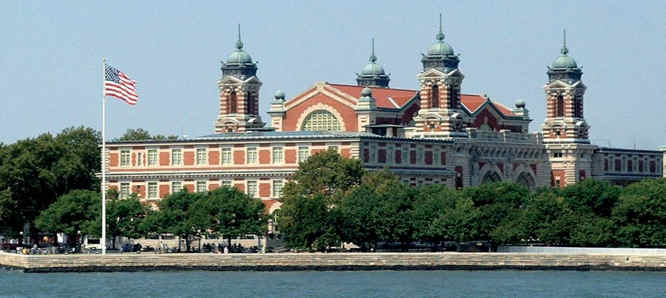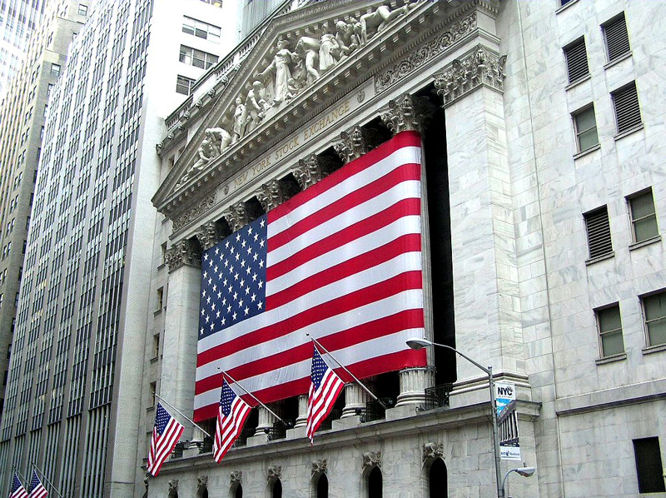Ellis Island Museum
When you leave Liberty Island and the Statue of Liberty you climb on board a different ferry boat. This one takes you to Ellis Island. This was not a location on my top ten list of places to visit in New York.

Again I was wrong and very pleasantly surprised to find an incredibly interesting and very professional interactive historical exhibition. In the past more than 70% of the countries immigrants landed in New York because it was America's largest port.
First and second class passengers were processed by US Immigration officers on board ship, but third or steerage class passengers were ferried to Ellis Island when they underwent medical and legal examinations in the Main Building.
How much is the Ellis Island Museum entrance ticket?
Entrance to Ellis Island Immigration Museum is free. Ellis Island is at the mouth of the Hudson river in New York harbour. It is under the management of the National Park Service. The museum contains three floors of self guided exhibits and audio/visual displays detailing the history of immigration processing station between 1892 and 1954.
You can tour the Great Hall where immigrant legal and medical inspections took place. You can check ship passenger manifests on computers to see if any of your relative are amongst the millions of people who moved to America.
It is a very important symbol of America's immigrant heritage and one of the must visit locations for many Americans who want to trace their ancestors. You can also find out who your relative travelled with and where they came from.
Through the years Ellis Island has been enlarged from its original 3.3 acres to 27.5 acres mostly by landfill obtained from ship ballast and excess earth from the construction of the New York City subway system.
The history of Ellis Island
Ellis Island was known as Oyster Island for many generations during the Dutch and English colonial period because of its reach oyster beds. Samuel Ellis became the island's private owner in the 1770's. Ellis Island, once a sandy island that hardly rose above the high tide mark, into a hanging site for pirates. When the British occupied New York City during the American War of independence (Revolutionary War), the Royal navy was able to sail unimpeded directly into New York Harbor
Before the second war with Britain in 1812 the United States Government realised that it needed a series of forts to protect New York harbour. A fort was constructed with a parapet for three tiers of circular guns. The fort was named Fort Gibson, after an officer who was killed during the 1812 war.
The Federal government constructed a new immigration station on Ellis Island built. It opened on January 1, 1892 and the first immigrant to be processed the next day was Annie Moore, a 15 year-old Irish girl, accompanied by her two younger brothers.
Immigrant would be excluded from entering the USA if a doctor diagnosed that the immigrant had a contagious disease that would endanger the public health. During World War II Ellis Island became a prisoner of war camp for enemy merchant seamen. They were detained in the baggage and dormitory building.
The gift shop is worth a visit as it has some unusual items for sale that relate to American immigration. In the spring and summer, 30 minute plays are put on by the Ellis Island living Theatre group about the life experiences of the immigrants who arrived at Ellis Island in New York

New York's Wall Street
When you have finished looking around Ellis Island you climb onto a third ferry boat. This one takes you back to Manhattan Island. I now have a very big tourist tip. NOTE: - Some of the cheapest New York tourist T shirts and sweat shirts can be found on the stalls in Battery Park as you come off the ferry boat. I found they were also of good quality. They are the same ones you see in the shops but a lot cheaper because the stall holders do not have to pay high shop rents.
When you get off the Statue of Liberty ferry boat back on New York Manhattan Island, you are very near the Wall Street business area. Wall Street itself took its name from a small wooden defence wall the Dutch built in 1653 to mark the northern limit of New Amsterdam, the original name for New York. Look out for the very dramatic big sculpture of a bull representing the traders in the New York Stock Exchange.
Travel books

